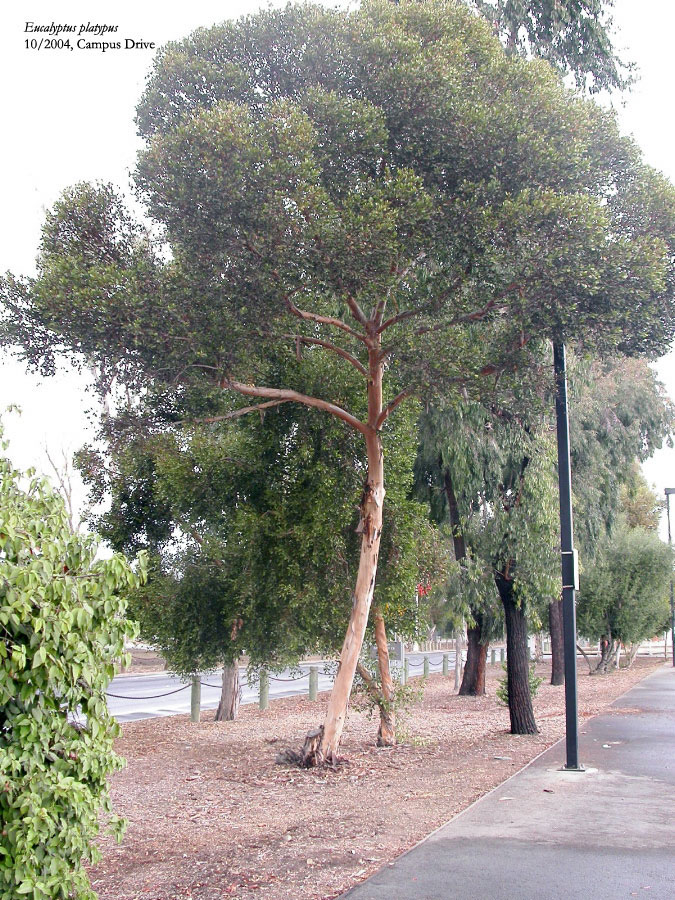Eucalyptus platypus
 round-leaved moort
round-leaved moort
The broad, flattened peduncle gives the species its name: platy-pus or flat foot (from a common root of the first part, we also get Platanus, the plane tree). Seven buds are held at the end of this strap that may be up to 1½ inches long. Long, narrow, horn-like opercula dramatically protrude from the bud cups, resulting in the whole ensemble looking like a hand with absurdly long nails or a fiercely taloned bird’s foot. These clusters make attractive additions to dry floral arrangements and could even be an eye-catching boutonniere (the peduncle would slip right into a buttonhole). Note that the buds, while mostly stalkless, are not fused together as in E. conferruminata. Yellowish flowers are followed by fruit that retain the 4 longitudinal ridges from the bud cup stage. The handsome leaves are roundish, often notched at the tips, and remarkably thick.
Five specimens remain of eight on Campus Drive between Bonair Siding and Maples Pavilion, tucked among the red ironbarks and olives. Their trunks are smooth and peeling, shades of gray with patches of coppery orange. Gleaming black masses of kino exude from the one closest to Bonair Siding. The closely related red-flowered moort, E. nutans, was on the former Eucalypt Walk on Campus Drive near Lantana.
Gallery







Related material: Eucalyptus checklist.
About this Entry: Authored Feb 2025 by Sairus Patel.




